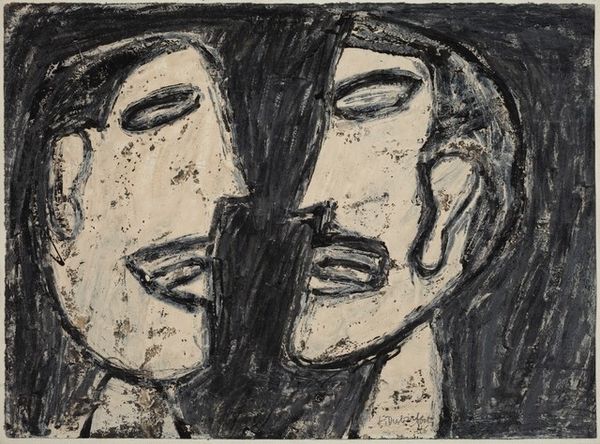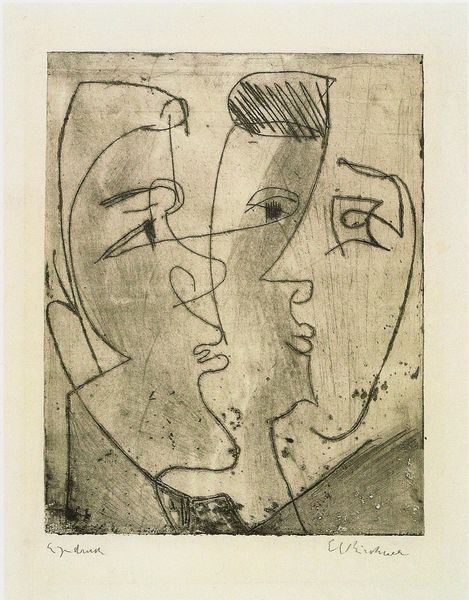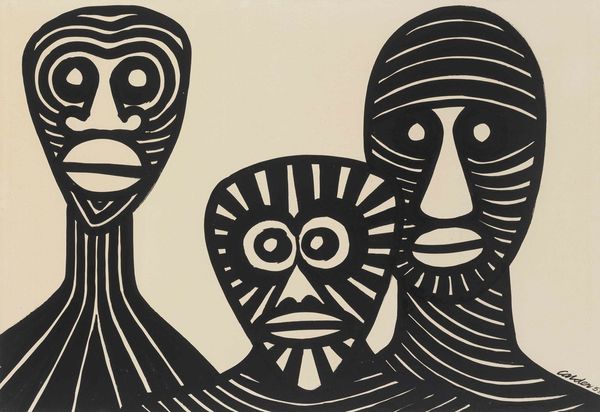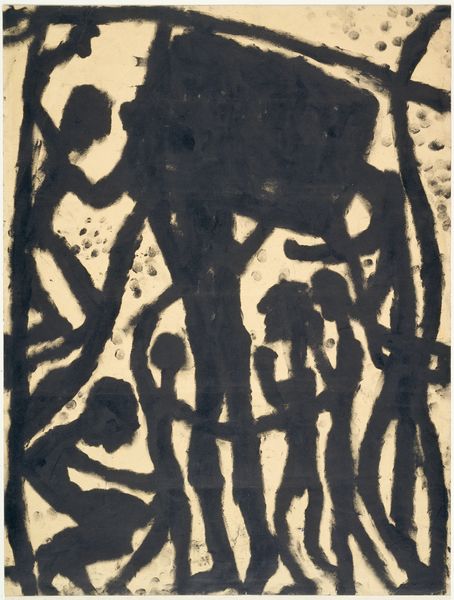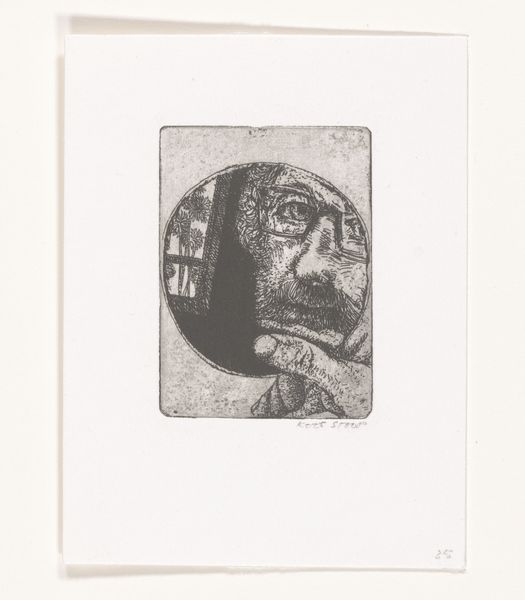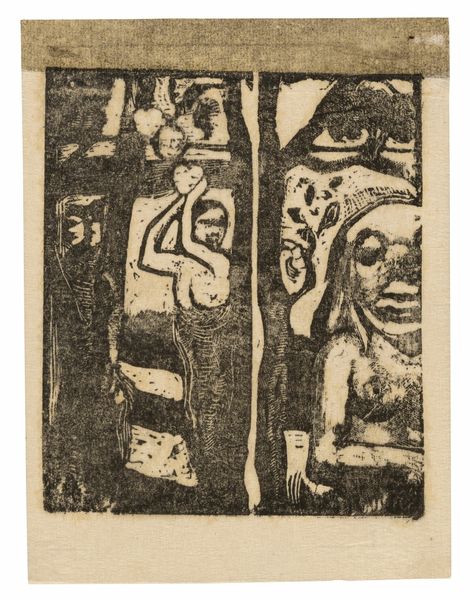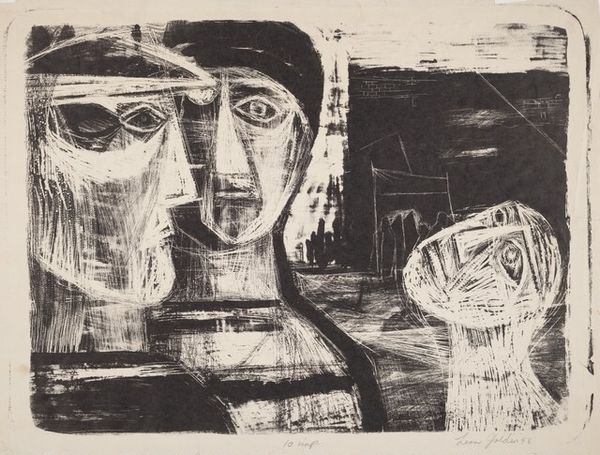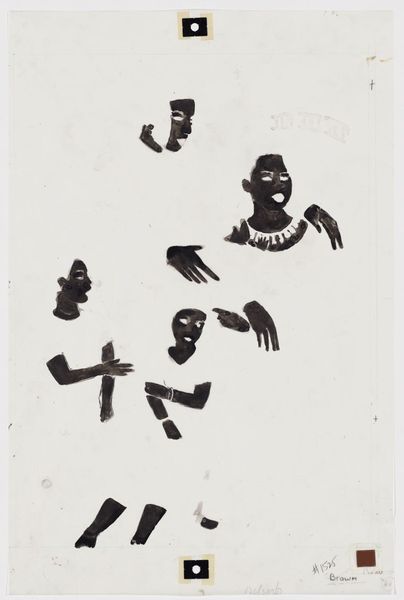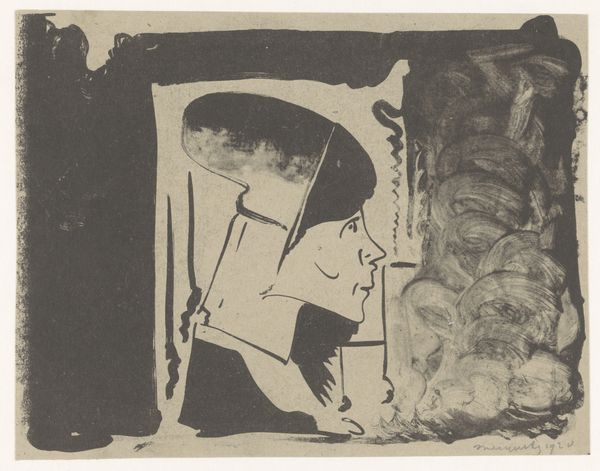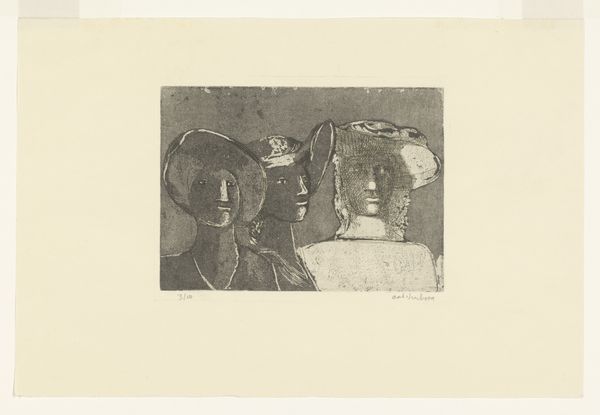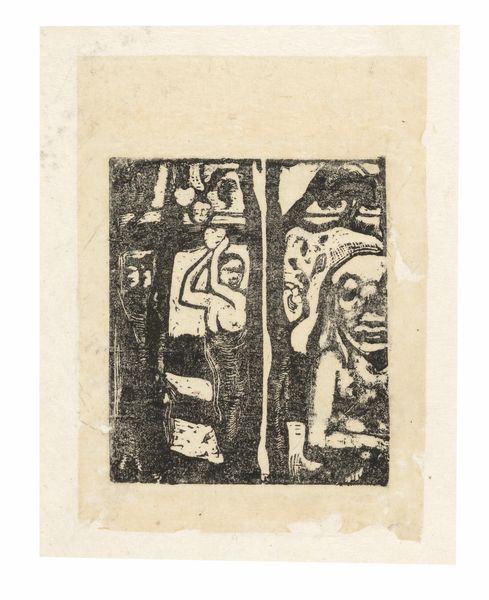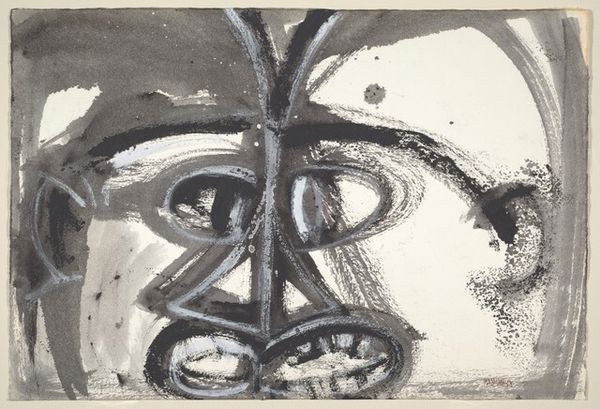
Copyright: Jean Dubuffet,Fair Use
Editor: Here we have Jean Dubuffet’s “Group of Faces II” from 1946, rendered in mixed media graphic art. It's quite striking. The figures almost feel primitive, with their bold, raw application of ink. What aspects of the production stand out to you? Curator: Immediately, I’m drawn to the process Dubuffet employed. The materiality of the ink, the seemingly hasty application… it speaks to a conscious rejection of academic polish. Consider the postwar context, the questioning of established values. How does this piece reflect a shift in the function of art itself? Is Dubuffet offering us portraits or something else entirely? Editor: I see what you mean about the societal context. It feels like he's actively dismantling traditional portraiture. The materials he chose and his process seem deliberately crude. But, do you think this rawness intends to remove the artist's hand from the final work? Curator: Not entirely remove, but redefine it. This isn’t about illusionism or technical mastery in the traditional sense. It's about the very act of creation, the labor involved, and the dialogue between artist and material. Consider the implications of calling this "Group of Faces." What kind of "group" is presented here, given their individual distortion? Editor: So it is more about a collective, created with readily accessible materials reflecting maybe the shared trauma experienced in France during the Second World War, rather than as individuals. That helps me understand his goal, in connection with his use of materials and processes. Thank you. Curator: Indeed. It showcases how the artistic process itself becomes a powerful commentary on society, challenging us to reconsider our relationship with both art and the world around us.
Comments
No comments
Be the first to comment and join the conversation on the ultimate creative platform.
